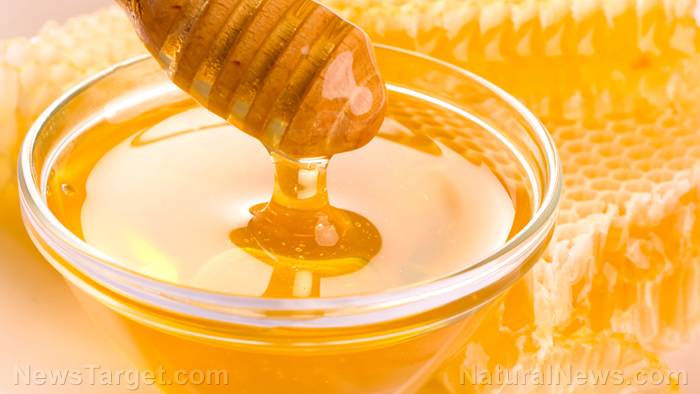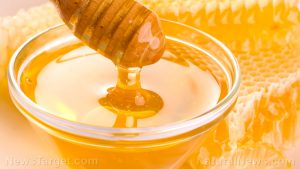
Honey – sources, health benefits, nutrients, uses and constituents at NaturalPedia.com
Thursday, July 06, 2017 by Frances Bloomfield
http://www.naturalpedia.com/honey-sources-health-benefits-nutrients-uses-and-constituents-at-naturalpedia-com.html

Honey is a viscous liquid made by bees from flower nectar. The flavor of honey will vary greatly depending on a number of factors, such as the types of flowers harvested for their nectar, storage conditions, and much more. Generally, however, honey is quite sweet and has been enjoyed as a natural sweetener and as a medicinal substance for thousands of years. Its health benefits have been documented as far back as ancient Grecian and Roman times, and even now honey is being consumed and used to support better overall health.

List of known nutrients
What honey lacks in cholesterol and sodium it more than makes up for in sugar: a huge portion of the calories in honey comes from its wealth of glucose, fructose, and monosaccharides. As with the flavor, the nutritional content of honey is dependent on the kind of flower nectar, but the common vitamins and minerals found in most types of honey include:
- Calcium
- Iron
- Manganese
- Omega-3
- Vitamin B2 (Riboflavin)
- Vitamin B6 (Pyridoxine)
Medicinal uses for honey
A notable medicinal use for honey is in wound management. Honey possesses antimicrobial and antibacterial properties, which speeds up the healing process by stimulating wound tissues, and promotes moist wound healing. Manuka honey is most notable for its efficacy in treating chronic wound infections by destroying key bacterial proteins.
In addition to its use in caring for wounds, honey can prevent or control:
- Asthma
- Athlete’s Foot
- Bronchitis
- Burns
- Cancer
- Conjunctivitis
- Constipation
- Cough
- Diarrhea
- Fluid Retention
- Free Radicals
- Heart disease, including hypertension
- Liver disease
- Mouth ulcer
- Sinusitis
- Skin infections and disorders
- Sore Throat
- Stomach Ulcers
- Tuberculosis
Body systems supported by honey
Apart from wound management, using honey on the skin can benefit it in other ways. When combined with other ingredients such as milk, honey can have a nourishing and moisturizing effect that leaves the skin looking smooth and young.
Honey can also support:
- Digestive system, including large intestine, stomach, pancreas, and bowels
- Extremities, including feet
- Eyes
- Immune system, including spleen
- Mouth
- Respiratory system, including lungs
Ways to use honey
Honey is a common sugar substitute, so sweet recipes calling for sugar can be made healthier by using honey instead. For every cup of sugar, use 3/4 cup of honey.
Honey does just as well in savory dishes, particularly salmon, chicken, and quinoa bowls. Generally, honey is versatile enough that it can be used or added to just about any food or drink. Tea, pancakes, oatmeal, toast, cereals, and marinades are but a few of the foods that can be improved by a slight drizzle or generous dollop of honey.
Since honey is antibacterial, it has an incredibly long shelf-life.
Where to learn more
- Honey – A top survival food, wound healer and all-purpose health tonic
- Honey and its many benefits to overall health and wellness
- Honey Is a Natural Alternative to Harmful Cough Medicines
- Honey Offers Many Benefits
- Honey provides antibiotic benefits and a low glycemic sweetener
Summary
Darker-colored honeys, like those from buckwheat, have higher antioxidant levels, making them quite effective at destroying free radicals.
The combination of glucose and fructose in honey makes it effective at aiding the body in blood sugar level regulation. Moreover, certain honeys like locust honey have a low hypoglycemic index and can therefore be consumed by diabetics without too much worry.
Honey offers relief from colds, coughs, and throat irritation.
Parents of babies under the age of one are warned against giving their infants honey. Whether pasteurized or raw, honey can contain botulinum endospores that can bring about infant botulism, a type of food poisoning that can result in muscle weakness, breathing problems, and even paralysis.
Sources include:
NutritionData.Self.com
OrganicFacts.net
Care2.com
EatingWell.com
MedicalNewsToday.com
Tagged Under: Tags: honey





